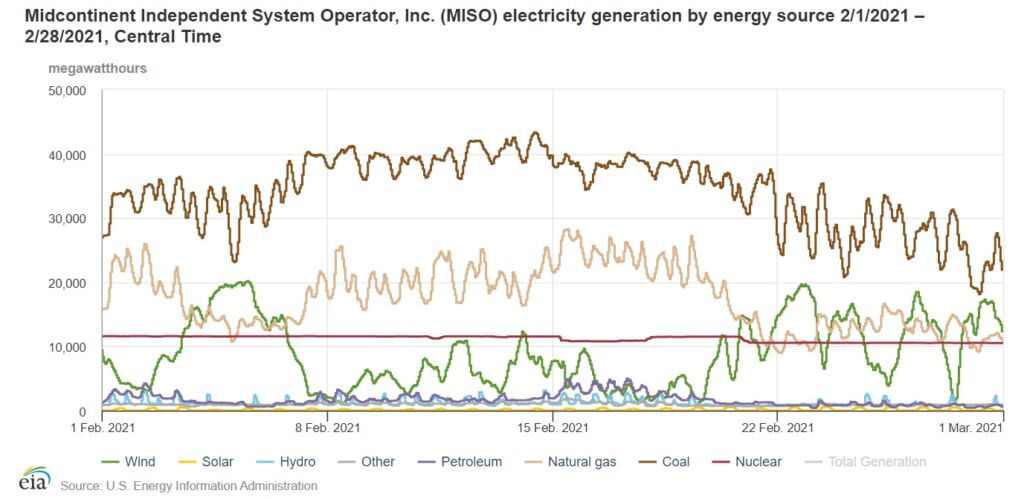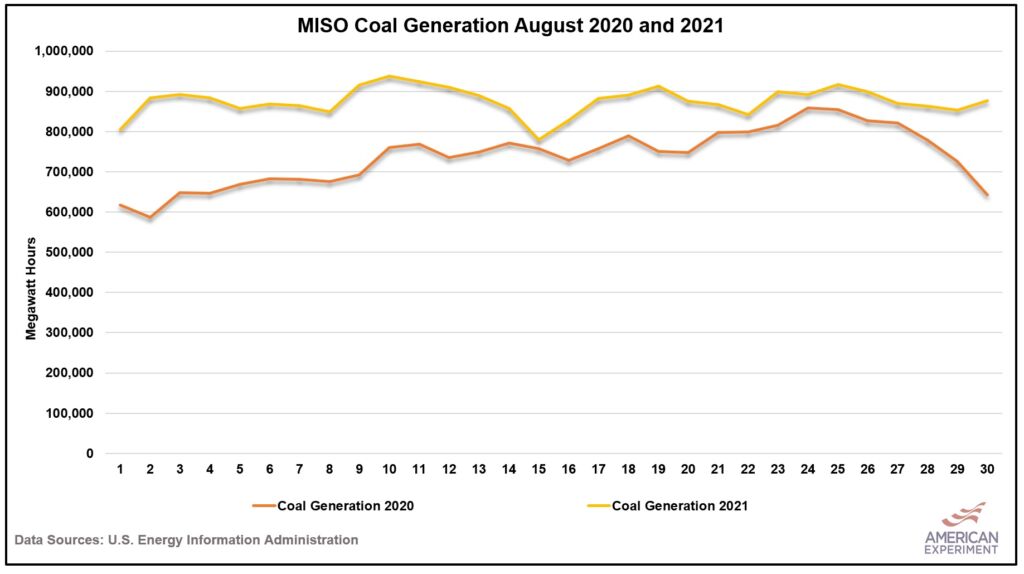Twenty percent of MISO coal fleet at risk of fuel supply problems this winter
S&P Global reports that about 20 percent of the coal-fired power plants in the regional power grid to which Minnesota belongs, the Midcontinent Independent Systems Operator, or MISO, are at high risk of fuel supply problems this winter.
While the warm winter has alleviated some concerns about coal supply shortages in other parts of the country, the MISO system is the most coal-reliant in the country, which means that having an adequate supply of fuel is of the utmost importance.
According to a MISO survey conducted this fall, companies representing 9,300 megawatts (MW) of coal-fired power plant capacity are at a high risk of having insufficient coal supply and transportation contracts to meet their anticipated needs.
S&P reports companies representing 17,600 MW of coal-fired plants are concerned their coal contracts will not be fulfilled due to supply or transportation issues.
This is a massive problem because coal carried the day during the polar vortex of 2021. The graph below shows that coal made up 43,000 MW of the electricity we used during the polar vortex, making it the single largest source of electricity during this time. Potentially losing 9,300 to 17,600 MW of coal power due to fuel shortages could mean blackouts.

Unfortunately, the S&P article does not provide much optimism for the future:
“Some argue that coal for 2022 is already sold out. It is looking really tight,” Mike Mattox an advisor at MISO, said at the meeting. Some generators are also worried it will be difficult to get the supplies they need for emission controls, he noted.
Coal inventories are short throughout much of the country, and coal mines cannot spring back to life to meet this demand fast enough.
There are many reasons for the coal shortages. Some of the reasons are due to short-term factors, and others stem from Obama-era policies that were designed to make it more difficult to mine and generate electricity with coal.
In the short term, coal supplies are low because electricity generators burned more coal this summer because it was cheaper than burning natural gas. As a result, coal generation in 2021 was significantly higher than in 2020, reducing stockpiles at existing power plants.

Looking at the long term, coal supplies are low because of years of Obama-era policies designed to limit the consumption of coal and hamper coal production. These policies, like the Clean Power Plan, the Mercury and Air Toxics Standard, the Effluent Limitation Guidelines, the Coal Combustion Residuals rules, and many others, have taken a toll on the industry, resulting in bankruptcies and falling mine outputs.
When a mine declares bankruptcy, it doesn’t just sit around waiting for demand for the product to pick back up again. The companies sell equipment to pay creditors, workers get laid off and find new employment, and the value of the human capital on-site is scattered to the wind. You can’t easily put this ecosystem back together once it has been destroyed.
The warm and windy winter we have had thus far may prevent us from having blackouts due to coal shortages, but we should not be content to hope for warm, windy weather when the reliability of our electric grid is at stake.
If Minnesota electric companies continue to shut down their reliable coal-fired power plants and rely upon wind, solar, natural gas, and imports of electricity from MISO, it will only be a matter of time before there is no more power to import, and we experience the rolling blackouts that affected the Southwest Power Pool last February.